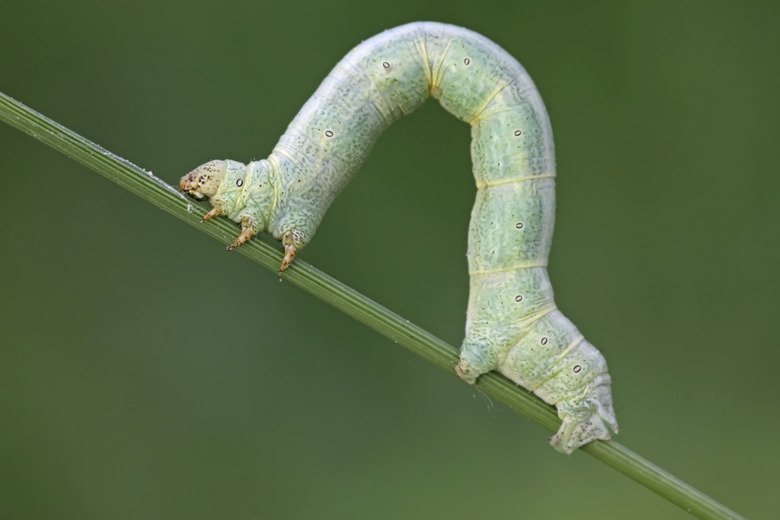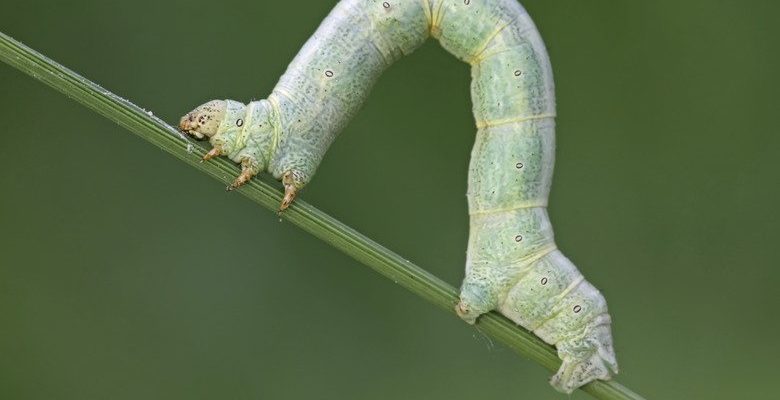
Think of inchworms like tiny, noodle-like acrobats, gracefully contorting their bodies as they make their way through the world. They’re not just moving; they’re doing a little show! Understanding their movement pattern isn’t only cool—it’s also a great example of how different animals adapt to their environments. So, let’s dive into the intricate world of inchworms and explore how they wiggle, crawl, and inch their way through life.
What Are Inchworms?
Before we break down their movement, it’s essential to know what inchworms actually are. Inchworms aren’t a specific species; they’re actually the larvae of various types of moths, particularly those in the Geometridae family. These little guys are often green or brown, which helps them blend in with their surroundings. This camouflage is key for avoiding predators!
Inchworms are famous for their distinctive movement. They curl up their bodies in a way that makes them look almost like they’re measuring the ground as they move forward. The term “inchworm” comes from the way they appear to measure out inches with each movement. It’s a fun name that captures the essence of their slow and steady crawl.
How Do Inchworms Move?
Now, let’s dig into how inchworms actually get around. Their movement is a combination of stretching and contracting their bodies. Here’s a simple breakdown of the process:
- Initial Curl: An inchworm starts by curling up its body, drawing in its rear end.
- Extension: It then stretches its front body segment forward, anchoring it to a surface.
- Releasing and Crawling: Next, it releases its rear end and pulls it forward to meet the front.
- Repeat: This sequence continues, creating that characteristic movement pattern.
You might be wondering why they move this way. Well, this method, sometimes called “looping,” allows them to travel efficiently while keeping a low profile. By staying close to the ground, they’re less visible to birds and other predators.
The Adaptation Advantage
Inchworms have perfected their unique movement style as a survival strategy. Their ability to blend in and move slowly helps them avoid detection. When they’re threatened, they can even freeze in place, resembling a twig or leaf. This camouflage is a clever trick that makes it hard for hungry birds to spot them.
The way inchworms move also helps them navigate their habitat effectively. They often live on trees and shrubs, and their inching motion allows them to reach food sources, such as leaves, without drawing too much attention. By munching on foliage, they grow and prepare for their transformation into adult moths.
The Life Cycle of an Inchworm
Speaking of transformations, the life cycle of an inchworm is fascinating. It starts when a female moth lays eggs on a suitable host plant. After a few days, these eggs hatch into larvae—what we call inchworms.
As they grow, they go through several stages, known as instars. During this time, they keep inching and munching, building up energy for their next big change. This is where their unique movement gives them an advantage, allowing them to stay hidden while they feed.
Eventually, they will enter the pupal stage. This is where the real magic happens. Inside their cocoons, they undergo metamorphosis, transforming into adult moths. Once they emerge, they spread their wings and take to the skies, starting the cycle all over again!
Interesting Facts About Inchworms
Inchworms are more than just cute little crawlers; they come with a few surprising facts:
- Color Variety: While they’re often green or brown, some inchworms can be bright colors depending on their species!
- Natural Predators: Birds, spiders, and other insects aren’t the only threats. Inchworms must also be wary of parasitic wasps that can lay eggs within them.
- Helpful in Nature: Inchworms play a role in their ecosystems, as they help in plant growth by consuming leaves and acting as food for other creatures.
These little tidbits paint a picture of inchworms as much more than just simple larvae; they’re key players in their ecological niches!
Why Understanding Their Movement Matters
You might be thinking, “Why should I care about how inchworms move?” Well, understanding their movement patterns can teach us a lot about biology and evolution. It shows how species adapt their methods for survival over time. Watching an inchworm, you can see evolution at work.
Moreover, these fascinating creatures are part of a larger ecosystem. By understanding their role, we learn more about biodiversity and the importance of every species, no matter how small. Inchworms, through their gentle movements, remind us to appreciate the intricate connections in nature.
How to Observe Inchworms
If you’re curious about inchworms, observing them can be a delightful experience. Here are some tips for watching these incredible insects:
- Find the Right Spot: Look near trees and shrubs, especially during spring and summer when they’re most active.
- Be Patient: Inchworms can be hard to spot due to their camouflage. Staying still and quiet will increase your chances of seeing one!
- Document Your Findings: Consider keeping a journal of your inchworm observations. Note their colors, movements, and habitat. It can be a fun science project!
By taking the time to observe inchworms, you not only learn more about their unique movement patterns but also foster a deeper connection to the natural world around you.
In conclusion, inchworms are a perfect example of nature’s creativity in movement and survival. From their unique inching style to their role in the ecosystem, there’s so much to appreciate about these tiny creatures. So next time you see one inching along a branch, take a moment to watch—it might just inspire a newfound respect for the little things in life!

